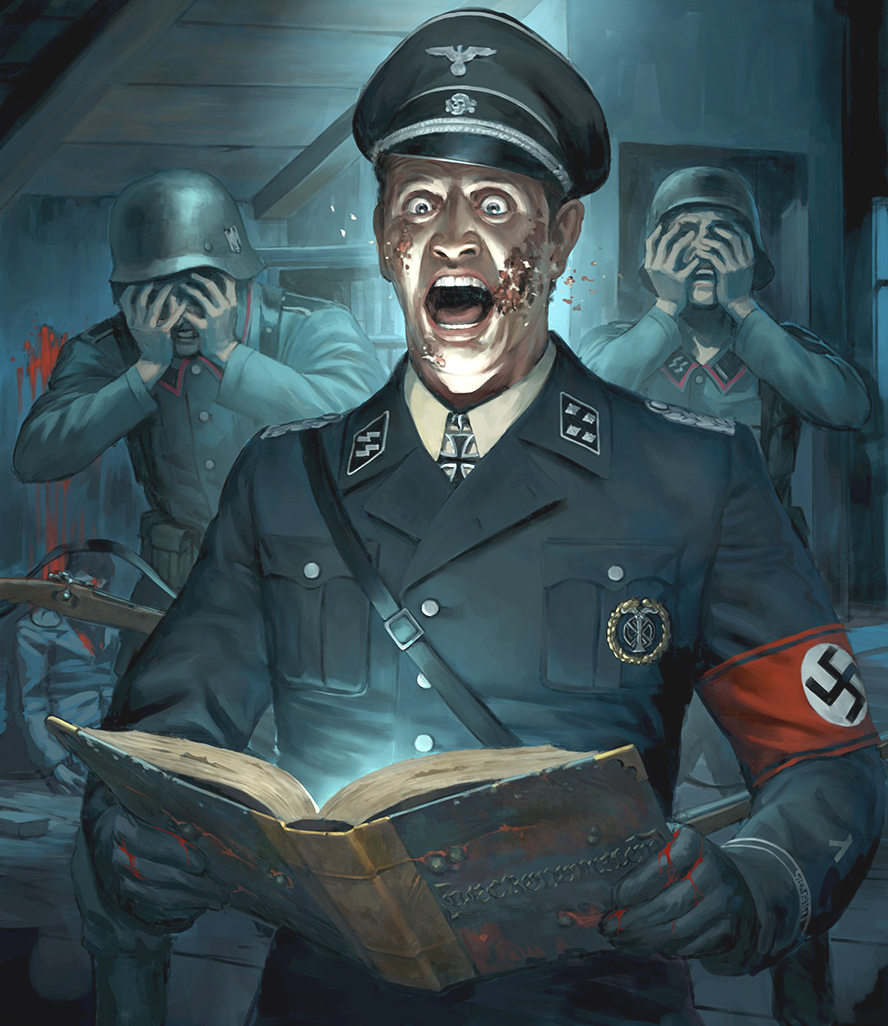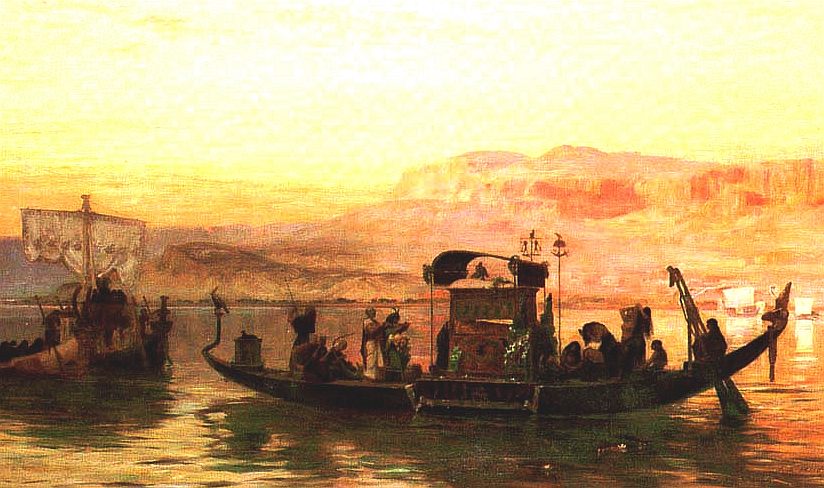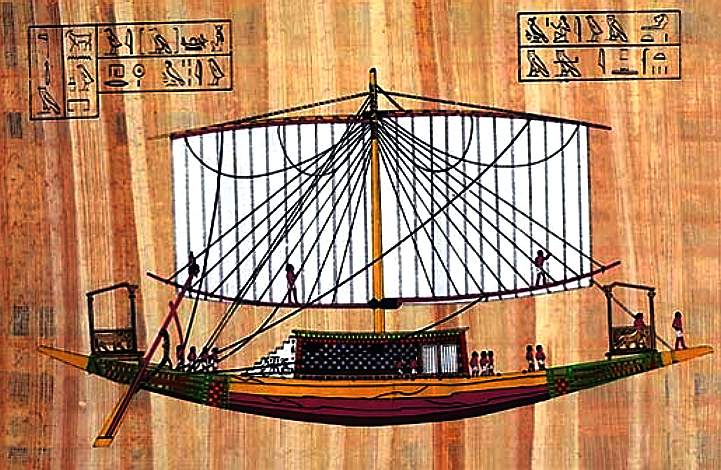|
..
THE HAGUE CONVENTION - FOR THE PROTECTION OF CULTURAL PROPERTY IN THE EVENT OF ARMED CONFLICT 1954
Through history, armed conflicts always wrought havoc on the lives of people. In addition to its humanitarian toll, conflicts also led to the large-scale destruction of cultural heritage, weakening the foundations of communities, lasting peace and prospects of reconciliation.
Considering that the preservation of cultural heritage is of great importance for all peoples of the world and thus needs universal protection, the Convention for the Protection of Cultural Property in the Event of Armed Conflict was adopted in 1954 under the auspices of UNESCO. Now widely referred as the 1954 Hague Convention, is the first and the most comprehensive multilateral treaty dedicated exclusively to the protection of cultural heritage in times of peace as well as during an armed conflict.
The 1954 Hague Convention aims to protect cultural property, such as monuments of architecture, art or history, archaeological sites, works of art, manuscripts, books and other objects of artistic, historical or archaeological interest, as well as scientific collections of any kind regardless of their origin or ownership.
Obligations
The commitments made by the States Parties to the Convention serve to preserve cultural heritage through the implementation of the following measures:
- Adopting preventive measures such as preparing inventories, planning emergency measures to protect property against the risk of fire or the collapse of buildings, and preparing the removal of cultural property to places of
safety;
-
Developing initiatives which guarantee respect for cultural property situated on their own territory or on the territory of other States Parties. This involves refraining from using such property in any manner that might expose it to destruction or deterioration in the event of armed conflict, and by refraining from all acts of hostility directed against
it;
-
Registering cultural property of very high importance on the International Register of Cultural Property under Special Protection in order to obtain special protection for such property;
-
Marking certain important buildings and monuments with a distinctive emblem of the Convention;
-
Providing a place for eventual refuge to shelter movable cultural property;
-
Establishing special units within the military forces responsible for the protection of cultural property;
-
Setting sanctions for breaches of the Convention; and,
-
Promoting the Convention among the general public and through target groups such as cultural heritage professionals, and military or law-enforcement agencies.
UK DEPARTMENT FOR DIGITAL CULTURE MEDIA & SPORT 12 SEPTEMBER 2017
- PRESS RELEASE
Government ratifies Hague Convention on protecting cultural property
The British Government has today formalised its commitment to protecting cultural property in times of war by ratifying the 1954 Hague Convention and acceding to its two Protocols, Minister for Arts, Heritage and Tourism John Glen has announced.
The 1954 Hague Convention for the Protection of Cultural Property in the Event of Armed Conflict and its two Protocols are designed to protect cultural property from destruction and looting during armed conflict. These include monuments, archaeological sites, works of arts and important artefacts.
The move cements the UK’s position as a world leader in cultural heritage protection and sends out a clear message on our commitment to protecting cultural property during conflict.
The Government introduced the legislation to ratify the Convention in the Cultural Property (Armed Conflicts) Act, which was passed into law in February 2017. The Government intends to bring the Act into force at the same time that the Convention and Protocols come into force for the UK.
The UK and France are the only permanent members of the UN Security Council to accede to both its Protocols.
Minister for Arts, Heritage and Tourism John Glen said:
"The world has watched with dismay and horror in recent years at the wanton destruction of priceless historic artefacts and sites in war.
By ratifying the Hague Convention and both its Protocols, the UK underlines our absolute commitment to protecting cultural heritage, both here and across the globe."
The 1954 Hague Convention was set up following the massive destruction during the Second World War. The UK chose not to ratify the Convention or accede to the First Protocol in 1954 as it considered, along with a number of other countries, that it did not provide an effective regime for the protection of cultural property. The adoption of the Second Protocol in 1999, which the UK was involved in negotiating, addressed these concerns and allowed the UK to announce its intention to ratify in 2004.
Ratification of the Convention builds on the Government’s £30 million Cultural Protection Fund, which is helping protect and restore cultural heritage in global conflict zones.
Subject to confirmation by UNESCO, the Convention and Protocols will
have come into force in the UK on December 12, 2017.
NAZI - DEGENERATE ART
The Nazi Party headed by Adolf Hitler rose to power in Germany in 1933 after the country's crippling defeat, and its socioeconomic distress during the years following World War I. World War II was aimed at reclaiming the glory of the once great Germanic state. Cultural property of many European nations and significant ethnic and social groups within them fell victim to Nazi Germany. The Nazi party, through the Third Reich, confiscated close to 20% of all Western European art during the war. By the end of the Second World War, the Nazi party had looted and collected thousands of objects, art works and artefacts from occupied nations, destroyed many, or stored them in secret.
With artists depicting the hardship of the German people after
World War
I, and further expressing the fear of anti-Semitism and fascism, the Nazi party and Hitler himself soon realised the dangerous power of art, and began to clamp down on artistic production,
forcing both artists and the public alike to adhere to a Nazi-approved style.
Inherent within the Nazi's ideology was the idea of supremacy of the Aryan Race and all that it produced; as such the Nazi campaign's aims were to neutralize non-Germanic cultures and this was done through the destruction of culturally significant art and artefacts. This is illustrated greatest in the Jewish communities throughout Europe; by devising a series of laws that allowed them to justify and regulate the legal confiscation of cultural and personal property. Within Germany the looting of German Jewish cultural property began with the confiscation of non-Germanic artwork in the German state collection. Further, artists that were Jewish and artworks that did not match the Nazi ideology, or posed a threat to it, were stamped as degenerate art. Degenerate works of art, culminating in the infamous exhibition with the same name, were those whose subject, artist, or art was either Jewish or expressed Anti-Nazi sentiments, and was as such offensive to the Third Reich.
Jewish collections were looted the most throughout the war. German Jews were ordered to report their personal assets, which were then privatized by the country. Jewish owned art galleries were forced to sell the works of art they housed. The Nazis concentrated their efforts on ensuring that all art within Germany would be Aryan in nature, speaking to the might of the Germanic state rather than Jewish art which was deemed as a blight on society. In a feat to "purge" German museums and collections, confiscation committees seized approximately 16,000 items within Germany. The remaining unexploited art was destroyed in massive bonfires. As the war progressed, the Nazi party elite ordered the confiscation of cultural property throughout various European countries.
NAZI PLUNDER IN EASTERN EUROPE
In the Soviet Union, Nazi plunder of cultural significant art is best illustrated in the
Third
Reich's pillage of the Catherine Palace near St Petersburg and its famous Amber Room dating to the early 1700s. In October 1941, the Nazis had occupied the western portion of the Soviet Union, and began removing art treasures to the west. The entirety of the Amber Room was removed to Königsberg and reconstructed there. In January 1945, with the Russian army advancing on the city, the Amber Room was ordered to be moved again but its fate is thereafter unclear. A post-war Russian report concluded that 'summarizing all the facts, we can say that the Amber Room was destroyed between 9 and 11 April 1945' during the battle to take the city. However, in the absence of definitive proof, other theories about its fate continue to be entertained to the present day. With financial assistance from German donors, Russian craftsmen reconstructed a new Amber Room during the 1990s. The new room was dedicated by Russian President Vladimir Putin and German Chancellor Gerhard Schröder at the 300th anniversary of the city of Saint Petersburg.
AFTER WORLD WAR II
With the conclusion of the Second World War and the subsequent defeat of the Axis Powers, the atrocities which the Nazi leadership condoned, leading to the removal of culturally significant items and the destruction of numerous others could not be allowed to occur in future generations. This led the victorious Allied forces to create provisions to ensure safeguards for culturally significant items in times of war. As a result, following the signature of the Roerich Pact by the American States in 1935, attempts were undertaken to draft a more comprehensive convention for the protection of monuments and works of art in time of war. In 1939, a draft convention, elaborated under the auspices of the International Museums Office, was presented to governments by the Netherlands. Due to the onset of the Second World War the draft convention was shelved with no further steps being taken. With the conclusion of the war, a new proposal was submitted to UNESCO by the Netherlands in 1948. The General Conference of UNESCO in 1951 decided to convene a committee of government experts to draft a convention. This committee met in 1952 and thereafter submitted its drafts to the General Conference. The intergovernmental Conference, which drew up and adopted the Convention and the further Acts, took place at The Hague from 21 April to 14 May 1954 where 56 States were represented. Following this international agreement The Hague Convention For the Protection of Cultural Property in the Event of Armed Conflict would come into force in 1956 in order to be an instrument of non derogation for the states bound by the document to stop the looting and destruction of cultural property.
WAR CRIMES - IMPLEMENTATION & PUNISHMENT FOR INFRINGEMENT
The Rome Statute, adopted in July 1998 and entering into force four years later, as the legal basis of the
International Criminal Court (ICC), defines in Article 8(2) deliberate attacks against buildings of a religious, educational, artistic, scientific or non-profit nature and against historical monuments as war crimes in both international and non-international armed conflicts. The International Criminal Court is thus authorised to prosecute such crimes if such an act was committed either by a national of a Contracting Party or on the territory of a Contracting Party. However, it only exercises its competence if the country concerned is unwilling or unable to ensure effective prosecution itself. Since September 2015, Ahmad Al Faqi Al Mahdi has been charged with the destruction of mausoleums in Timbuktu in the first trial before the ICC over the destruction of cultural assets.
INTERNATIONAL PARTNERING ORGANIZATIONS
As of June 2018, 131 states have become party to the Hague Convention of 1954 and 109 states to the first protocol. 77 states have become party to the Second Protocol of
1999.
Of the five permanent members of the United Nations Security Council, France became a party in 1957. Russia is contracting party in legal succession of the Soviet Union, which also became party in 1957. the People's Republic of China ratified the convention in 2000 and the United States acceded in 2009. The United Kingdom signed the Agreement in 1954 and ratified the Convention and acceded to the Protocols in 2017.
The main reason for the long period between signature and ratification by the United States were the reservations of the US Department of Defense during the Cold War, that the Convention's obligations regarding the possible use of nuclear weapons could not be fulfilled. The Joint Chiefs of Staff, to which the commanders-in-chief of all units of the American armed forces belong, unanimously declared itself in 1995 in favour of voluntary compliance with the Convention. On 6 January 1999, then US President Bill Clinton recommended that the US Senate ratify both agreements. In his opinion, they were not only in accordance with the principles and methods of the American Armed Forces, but were even based on them in essential aspects. After the Senate approved accession in September 2008, the US Ambassador to UNESCO, Stephen Engelken, handed over the instrument of ratification to Kōichirō Matsuura, Secretary-General of UNESCO on 13 March 2009. On the occasion of the 50th anniversary of the signing of the Convention on 14 May 2004, the Government of the United Kingdom declared its intention to become a party to the Convention and the two Protocols. This was due to the conclusion of the Second Protocol of 1999, which, in the view of the British government, eliminated essential weaknesses and ambiguities of the 1954 Convention. A draft law containing ratification of the Convention, the two protocols and criminal law provisions was announced by the UK government in November 2006.
UNESCO
The United Nations Educational, Scientific and Cultural Organization (UNESCO), a legally independent specialized agency of the United Nations based in Paris, and is the most important international institution in the field of dissemination and implementation of the protection of cultural property in armed conflicts. It acts as depositary of the Hague Convention of 1954 and its two Protocols and administers the "International Register of Cultural Property under Special Protection".
CIVIL SOCIETY STRUCTURES
The "International League of National Societies for the Protection of Cultural Property", based in the Swiss city of Freiburg, was also established in May 1997 as an international umbrella organisation. Through the activities of these national and international organisations and associations, which also include the protection of cultural property against disasters in times of peace, civil society structures will play an increasing role in the field of cultural property protection and support the work of state and international institutions.
One example of international cooperation in the protection of cultural assets was the temporary storage of art treasures from the National Museum in Kabul, Afghanistan, in Switzerland. The art objects, which were severely threatened in the National Museum both by the Afghan Civil War (1996–2001) that lasted until 1995 and by the subsequent rule of the Taliban regime, were moved to a so-called "Afghanistan Museum in Exile" in the Swiss town of Bubendorf in 1999 with the consent of all parties to the conflict. The exhibition, which was supported primarily by the voluntary work of Swiss citizens and exiled Afghans, as well as by donations of around 1.5 million Swiss francs and supervised by the Swiss Afghanistan Institute based in Bubendorf, was open to the public from October 2000 to October 2006 and was visited by around 50,000 people during this time. In March 2007, the objects were returned to Kabul under the direction of UNESCO and with the support of the German Air Force. According to the spokesman of the Bubendorf Museum, this was the largest return of art objects since the end of the Second World War.
In contrast, the Iraqi National Museum in Baghdad was heavily plundered and damaged from 8 to 12 April 2003, some three weeks after the start of the Iraq War. The museum was reopened only three years earlier on 28 April 2000, nine years after its closure as a result of the Second Gulf War. Later investigations carried out by a US commission in collaboration with museum staff found evidence of at least three independent incidents. According to the Commission's findings, the looting was sometimes spontaneous and indiscriminate. However, a number of indications also pointed out that the thieves had a good knowledge of the museum and expert knowledge of the cultural assets on display. Although particularly valuable objects were kept in the cellar of the museum in the run-up to the war, considerable losses were also incurred here. The Commission corrected initial estimates of some 170,000 stolen works of art to 11,000–15,000 stolen objects. By the time the study results were published in 2005, about 5,000 of them had been recovered in various ways.

Blood
and Treasure is a network TV series by CBS


REFERENCE
https://ihl-databases.icrc.org/ihl/INTRO/400
https://en.unesco.org/protecting-heritage/convention-and-protocols/1954-convention
https://www.gov.uk/government/news/government-ratifies-hague-convention-on-protecting-cultural-property
United Nations UNESCO
http://www.huffingtonpost.com/rajendra-abhyankar/syrian-blood-antiquities-_b_6095248.html.
https://www.washingtonpost.com/news/wonk/wp/2015/11/18/how-isis-makes-its-money/
http://culturalheritagelawyer.blogspot.com/2015/12/antiques-from-syria-us-cultural.html.
|






